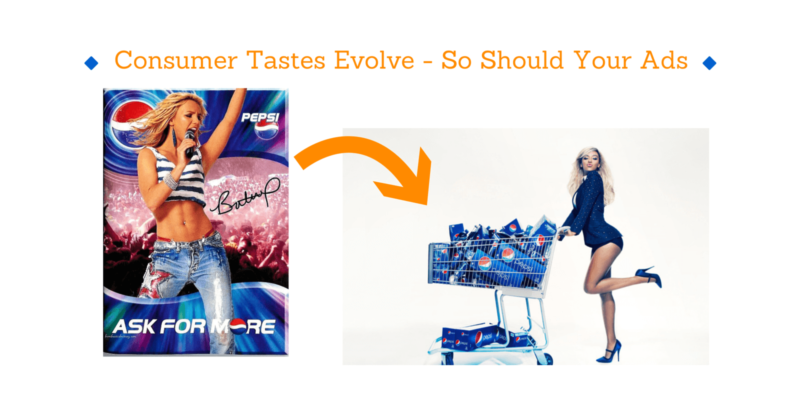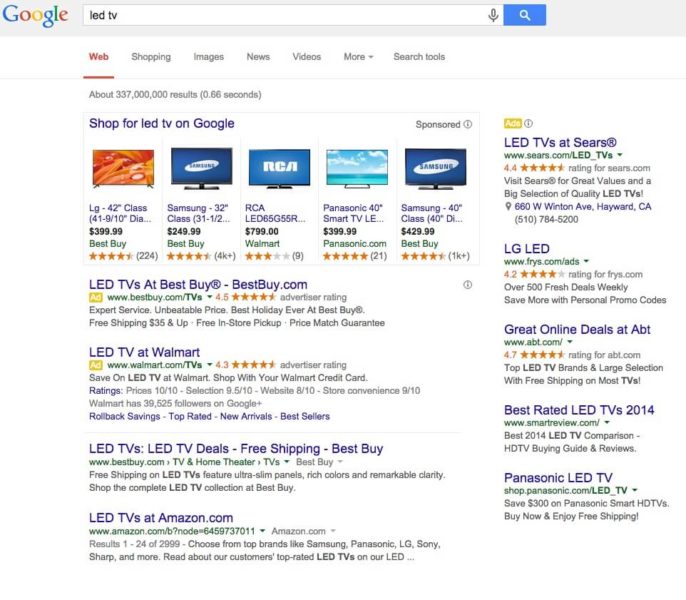4 Reasons Your Search And Display Ads Are Getting Fatigued
You invest a lot of time into your paid search campaigns, but how much is spent on refreshing your ad copy? Columnist Frederick Vallaeys, along with his guest David Greenbaum, discuss how to overcome ad fatigue for maximum impact.

As a former Google spokesperson, I’ve spent many years analyzing AdWords accounts and seeing the same mistakes time and again.
Today, I’d like to focus on one of the most common mistakes: not giving ads the love they deserve.
When AdWords and pay-per-click became big in the early 2000s, it was because they offered incredibly precise targeting along with attractive pricing.
Now, both old and new advertisers seem to have gotten so focused on optimizing the new stuff — targeting and bidding — that somewhere along the way, they forgot about one of the most important aspects of a successful ad: crafting the perfect message that resonates with their audience.
While there’s no question that maintaining the right targeting, keywords and bids are critical to the success of any AdWords account, I believe there is still a big opportunity for advertisers to improve their ads.
That’s why I became an advisor for Boost Media, and that’s why we added ad text optimization tools to Optmyzr.
While I certainly have my own opinion on this topic, I thought I’d ask David Greenbaum, the co-founder and CEO of Boost Media, to share his thoughts about specific ways that we can improve our ads since this is what his company does every single day.
Take it away, David!
David Greenbaum, Co-Founder And CEO Of Boost Media, And His POV:
What Ads Should Never Be
Ad copy should be a lot of things. Intriguing. Compelling. Informative. Entertaining. Perhaps even provocative. One thing it should never be? A “set it and forget it” item on a marketer’s campaign launch to-do list.
Much like offline ads, digital ads need to be attended to. They need to be refreshed, taking into consideration factors like seasonality, the competitive landscape and ever-shifting consumer needs.
Put another way, digital ad copy should change and evolve to stay relevant, fresh and current.
Pepsi didn’t continue to run its iconic Britney Spears campaign five or 10 years down the road from its powerful debut. Why should this be any different with your digital ad campaigns?
Just as Pepsi tapped Beyoncé as the new face of the brand, marketers should pop open refreshing new cans of creative when it comes to their digital ads.

Pepsi evolves with the times and gets new artists to represent their brand. Your ads should evolve too and stay in tune with consumer tastes.
Marketers wouldn’t dream of allowing offline ads to run for years on end, but that is frequently the case with paid search. Good marketers intuitively understand that relevant messaging is the key to campaign success.
However, digital marketers spend less than 3% of their time on developing, refreshing or optimizing their search ads. Consequently, ads get fatigued and people (i.e., your audience) develop ad blindness. So what is a marketer to do?
The Problem Of Ad Fatigue Today
The online advertising space continues to aggressively grow by the billions, yet consumers are oftentimes overwhelmed by the abundance and repetition of ads they see. And when the same old ad runs too often, consumers stop responding. We call this ad fatigue.
Ad fatigue sets in when an ad that historically performed well stops delivering value. Why does this occur? For two reasons.
First, consumers grow accustomed to seeing the language and become desensitized to the message. Second, competitors start to pile on and recycle the messaging.
When ad fatigue sets in, click-through rate (CTR) and Quality Score drop — increasingly making ad fatigue a problem online marketers should be solving for in their SEM campaigns.
Below are four ways to avoid ad fatigue through refreshing every aspect of your ad copy.
1. Seasonality & Product Changes
Retailers have a particular cadence for updating product catalogues and refreshing inventory. When what you are selling changes, so should the corresponding ad copy.
When a clothing company releases a new line of Italian cashmere sweatshirts, for example, they update inventory lists and product catalogues.
Similarly, when a brand repositions itself in the marketplace or takes on new objectives, it should be reflected in the evolving campaign strategy.
Consumer brands respond to seasonality and promotions by adapting keywords, ad text and landing pages to the specific holiday or season. If you’re selling a car in the winter, it’s more effective to show a rugged, four-wheel drive vehicle than a sporty, top-down convertible.
Make sure the right ads are running at the right time, and not too often. When the same ad runs too frequently, the consumer is desensitized.
2. Copycat Messaging
Another part of the ad fatigue equation is messaging that is simply not unique.
Oftentimes, smaller brands will piggyback on the brand leader, copying ad text and messaging. The problem with repetition in the ad landscape is that messaging becomes diluted, causing a shorter shelf life for ads due to the “pile on” from smaller competitors (think of it as something like a “multi-ad pile up”).
Look at this example for LED TVs. The ads on the page all use the same format for the headline and as a result look alike on the page, having little effect on the consumer.
When an ad resembles several competing ads on the same page, it no longer packs a punch. In fact, it probably doesn’t pack any kind of punch at all.

When the ads all start to look too similar, audiences tune out from the ads because nothing grabs their attention. Screenshot from Google.com taken October 26, 2014.
3. Evolving Consumer Needs
One of the biggest battles that an online marketer faces is understanding the fickle, ever-changing consumer in today’s fast-paced, multi-media marketplace.
As culture and language constantly evolves, so do the ways consumers search for or discover your products. So, how do you make your ad stand out across a changing and evolving consumer landscape?
Some of the most effective ads we see are written in today’s lexicon. One client saw a huge improvement in an ad that used the manufactured word “You-nique.”
The bottom line here? Marketers see results when they talk to consumers the same way those consumers talk among themselves.
When advertising to Millennials, for example, experiment with different strategies and ways of engaging with this particular demographic. Consider their varied interests, dialogue and behaviors. Make them feel included in the conversation – as opposed to being advertised to – and your campaigns will be more successful.
What consumers are searching for changes regularly, and the ad text that is directed back at them should also change.
Successful online marketers are mindful of the evolution of language and sensibilities, and make the appropriate changes in their ad campaigns and outreach strategies.
4. Changing Ad Platforms
Google is frequently rolling out platform updates that allow online advertisers to engage with people based on factors such as device, geography and audience – to name just a few factors.
In display, marketers can segment customers by Topics to target pages about a specific subject. If you are targeting males ages 18 to 24 interested in climbing, for example, you can segment based on a Topic such as “fitness” to better serve relevant display ads.

Google AdWords lets you target users in many different ways to make sure you’re writing ads that are targeted to each specific audience too.
The benefit of remarketing lists for search ads (RLSA) is that you can build specific campaigns around customer behaviors.
For example, you can target a customer who abandoned the page before purchasing more aggressively by offering discounts and other promotional offers.
The more ways you have in your wheelhouse to segment your consumer base, the more unique opportunities you’ll have to talk to them.
However, with each new ad format or changes to targeting criteria, it becomes more important to keep ad creative fresh and your messaging relevant.
The Dilemma Of The Busy Search Marketer
The bigger problem is this: How can a busy search marketer consistently create fresh and compelling ads for hundreds of ad groups in a cost-effective and timely manner, while ensuring that these new ads perform at a higher level and resonate more deeply with customers?
Writing evocative ad copy, as we know, is more of an art than a science. Good marketers understand this, and would agree that creatives play an important role in digital advertising.
The challenge comes when faced with the demand of writing hundreds of thousands of ads. Writing and continuously refreshing ad copy can be a full-time job, and most search marketers simply don’t have the time or creative skills to develop compelling ad copy at scale. Most advertisers have thousands of ad groups that need fresh ad copy on a consistent basis.
For years there have been incredible investments into technology platforms to focus on optimizing keywords and bids, why not technology for creative?
For the most part, campaign creative has simply been an afterthought, executed through Dynamic Keyword Insertion (DKI), ad templates and other non-unique production approaches.
We believe humans are at the core of creativity, not machines. But, machines have their place too, and that’s why it’s worth looking at technologies to write, test and report on ad creative. (Full disclosure: that’s what we do at Boost Media.)
And Now, Back To Frederick Vallaeys:
Thanks for sharing your thoughts on the most compelling reasons to change your ads frequently, David!
I see this, as well, when working on accounts; we can really boost the CTR of ads by doing constant work on them, always testing and improving. Below are four quick tips from my own experience:
- Ad Background Color. With one of our display campaigns we noticed a declining CTR. By simply changing the background color from yellow to blue, we were able to instantly restore our old CTR because the ads looked different and users started noticing them again.
- Ad Frequency. Use frequency capping for display ads so that you’re not annoying users who’ve seen your ads a lot already.
- Ad Rotation. Use the right ad rotation option in Google. It can automatically optimize for the ads with better CTR or conversions; but even when you use one of these options, you still have to remember to delete the worst performing ads once in a while. Or you can rotate ads evenly and use a tool to help clean up losing variants.
- Ad Customization. Take a look at Google’s new ad customizers, a great way to take dynamic keyword insertion to a whole new level.
I also think it’s good for the marketing team to take a step back once in a while and consult someone who hasn’t worked on the campaign for years, because it’s too easy to overuse your own company jargon and lose sight of how customers think about and talk about your company and products.
Contributing authors are invited to create content for Search Engine Land and are chosen for their expertise and contribution to the search community. Our contributors work under the oversight of the editorial staff and contributions are checked for quality and relevance to our readers. The opinions they express are their own.
Related stories
New on Search Engine Land
